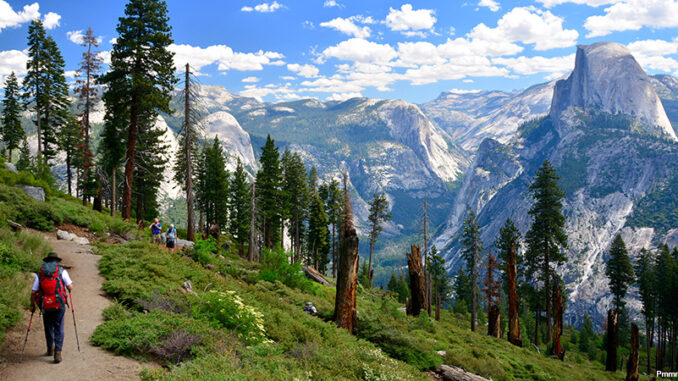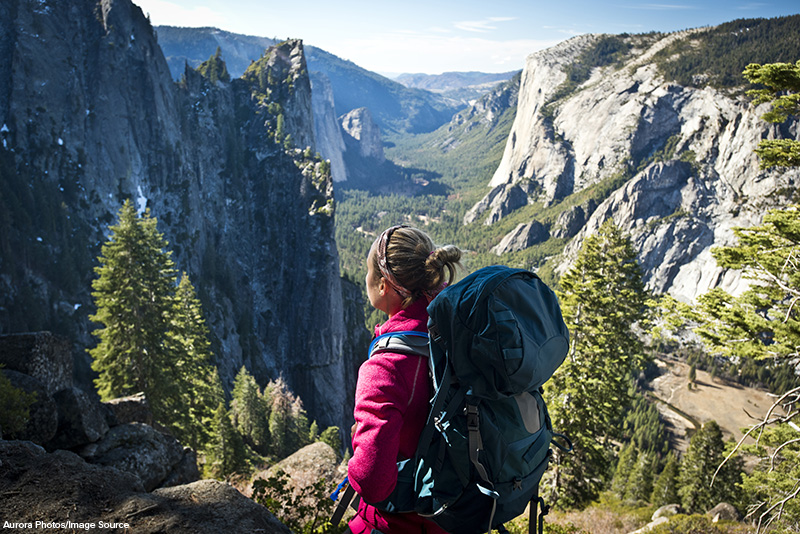
You’re probably excited about your favorite stores and restaurants opening back up again after many states have begun to relax their stay-at-home orders. National parks are starting to open up as well, albeit with additional safety precautions in place. One example of this is Yosemite National Park, located in California’s Sierra Nevada Mountains. The park, which encompasses about 1,200 square miles and is famous for its waterfalls, usually hosts several million visitors per year. Of course, all of that changed with the global COVID-19 pandemic. But now, people can visit once again as the park undergoes a “phased reopening” plan. Here, btw takes a closer look at the details.
What Does the “Phased Reopening” Look Like?
According to the park’s Web site, beginning on June 11 authorities will begin to reopen the park little by little in accordance with guidelines from federal, state, and local health authorities. For now, if you plan to visit in a vehicle, you must make an online reservation to enter the park. Those who don’t have one will be turned away at the gate. Visitors who come on horseback or via public transit don’t need a reservation. This is to limit the attendance at the park to help protect everyone’s safety: only about half of the usual number of guests will be allowed in this month.

Furthermore, only two campgrounds in the park (Upper Pines Campground and Wawaona Horse Camp) are open. Upper Pines will only be open at 50 percent capacity, and both require advanced reservations. It’s currently uncertain if any other campgrounds will open up this year. That’s because some of the campgrounds have shared facilities that make proper social distancing impossible. Others are closed because the park can’t house its usual number of staff. Without enough staff, the park can’t properly clean and maintain its campsites.
For now, all hiking and backpacking trails are open, though visitors are asked to follow social distancing requirements and to wear a face covering whenever possible. Backpacking requires a wilderness permit, which must be secured online in advance. All visitor centers and shuttle services are closed. The park will likely increase services as state and federal health officials continue to lift restrictions.
How Has the Shutdown Affected the Park?
You’ve probably seen photos online of wildlife around the world enjoying the stay-at-home order, such as birds, deer, goats, jackals, coyotes, and even mountain lions wandering abandoned city streets. Yosemite is no different. Bears have experienced some additional freedom of movement without the usual traffic and visitors to contend with. Rangers in the park have reported more sightings of the animals than usual. As a result, overnight visitors to the park are required to bring or rent a bear canister to hold their food.
The shutdown hasn’t been so enjoyable for the human inhabitants of the area, many of whom rely on tourism from the park to make their living. Three months of shutdown has meant three months when innkeepers and shop owners had to pay utilities and rent on their facilities, with zero money coming in. In fact, it’s estimated that tourism dollars in the counties surrounding the park will fall by as much as half this year. Local business owners hope that the reopening, even though it’s only partial, will generate enough tourism revenue to help them make up for lost time.
